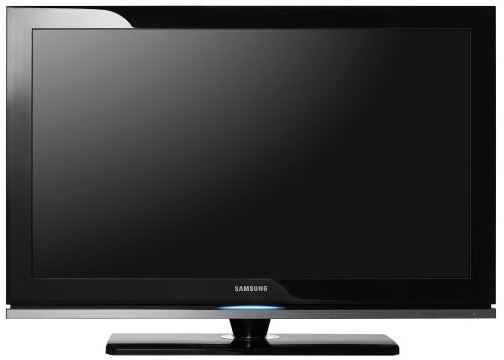HDTV Buying Guide - The Debate over 720p vs. 1080p
Almost There
The last part of the HDTV Buying Guide explained the differences between plasma and LCD HDTVs. With that major topic covered, the final thing that is needed is to hammer out a few important points that will decide which HDTV is the best fit.
720p vs. 1080p: The Second Big Debate
Besides the battle between plasma and LCD, the choice between is 720p and 1080p is one of the most hotly debated topics among HDTV enthusiasts. The question is one of value. 1080p’s resolution is no doubt higher than that of 720p, and by a fair margin. This makes a difference in how sharp an image can be. Certainly, formats like Blu-Ray tend to have a level of crispness in 1080p which cannot be overcome by the lower resolution format.
That said, the value perspective is a big deal. Many buyers fixate on the numbers of 720p and 1080p because they are the most quantifiable. Traits like color accuracy are more difficult to compute with a casual glance. That said, the quality of an HDTV picture is just as much to do with the vibrant picture as it does with the high resolution. In addition, 720p is nothing to sneeze at.
It is worth noting that there are limits to what the human eye can see at certain distances. One of the most common points in favor of 720p is the fact that a person standing a certain distance from an HDTV will never be able to tell the difference between 720p and 1080p. If the picture is too far away or the screen too small, the human eye simply can’t tell the difference. When buying a HDTV of under 40" there is rarely any benefit to buying a 1080p HDTV. On the other hand, screens of 52" and larger are rarely offered with anything except 1080p as an option. The buyers who will have to choose are those looking for a HDTV between the 40" and 52" range, and it does come down to personal preference. If the extra sharpness of 1080p is noticeable and the extra money isn’t an issue, 1080p is the way to go. But those who see no difference should skip straight to 720p.
A Note About 1080i
1080i stands for 1080 Interlaced. It is an HDTV format in which two images are interlaced frame by frame to create a whole 1080 size image. 1080i is rarely seen today, and I generally recommend staying away from it. This is not because 1080i is terrible, but simply because there is no real price obstacle between 1080p and 1080i. Also, there are extremely few new 1080i HDTVs being made today, so an 1080i HDTV found at a store is likely an older model.
Connections

Overlooking connections is easy to do when buying an HDTV. First-time buyers are particularly vulnerable as they often do not know what kind of devices they will buy in the future to accompany their HDTV. There are several particular kinds of connections which a buyer should look for.
HDMI - HDMI is a standard which came about with HDTVs and was constructed to provide the high bandwidth needed for HDTV video and high-quality audio. HDMI ports are found on virtually every home theater device for sale today including DVD and Blu-Ray players, AV receivers, and gaming consoles. Having at least three is a good idea, although one could get by with two if the HDTV is not going to be part of a dedicated home theater.
DVI/VGA - DVI is a common modern PC connection. Many new PCs will have an HDMI connection as well, but for PCs a few years old DVI will probably be the only video output. VGA is an even older PC connection which is often times not supported on new HDTVs but when can be useful when connecting a old HTPC to a new HDTV.
Component - Component connections are a series of connections which were very common before the rise of HDMI. Most older DVD players and AV receivers will require component connections. Having at least two is a must.
S-Video - While rarely used today, S-Video was seen on a fair number of business laptops in the last five years. An S-Video connection isn’t required on any HDTV unless there is a specific device in the home which will require its use.
Wrapping It Up
This is the end of the guide, but it shouldn’t be the end of one’s research. The next and final step in buying an HDTV is to research which brands are the best. Generally speaking, Samsung and Sony are the best LCD HDTV makes while Panasonic and Pioneer provide the best plasmas. There are always new products, however, so taking a good around BrightHub for the latest HDTV reviews is a good idea.
In any case, don’t get fooled by technological mumbo-jumbo. If the 720p HDTV looks better than the 1080p set, then buy 720p. There is no accounting for taste, and while enthusiasts know that there are certain ways video should be reproduced, the rest of us tend have preferences.
This post is part of the series: HDTV Buying Guide
Buying an HDTV can seem daunting, but don’t worry. Once a few basic topics are understood, HDTVs don’t appear so imposing. In fact, the process of finding and buying the right HDTV can be a lot of fun.
